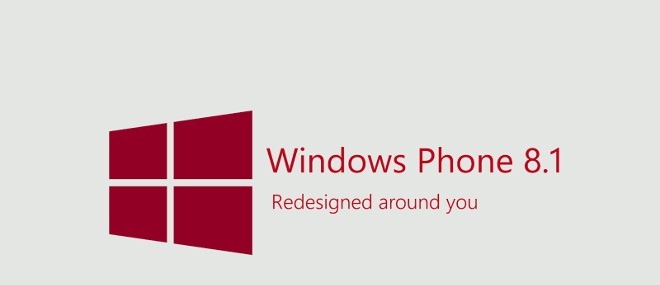Mac Mini M1 Android Emulator
Is the 8GB memory M1 Mac Mini sufficient to develop apps using Android Studio & Flutter or do you need the 16GB M1 Mac Mini?Let's find out by simulating.
For years, if Apple users wanted to run their favorite iOS apps on their computer, they’d have to do so via third-party applications, emulators, or other non-official methods. Now, if you own an Apple Silicon Mac (the newer ones with an M1 processor) and have the Big Sur iOS, you’ll have able to run iPhone and iPad apps on your Mac computer.
See also: Best Apple Macbooks
What’s the Benefit of Using iOS Apps on My Mac?
- With Android apps joining iOS apps, plus the huge amount of existing Mac apps that can be used on M1 Macs and Macbooks like the MacBook Air (M1, 2020) – currently our pick for the best laptop in.
- Has anyone had luck installing and running Ryujinx? It's a Switch emulator for Windows and Mac. I'm not able to install it because I'm having issues with my Homebrew(can't install gtk+3). I feel that it would run quite well on an M1 Mac considering Dolphin Wii games run perfectly.
Applications on the iPhone and iPad have come a long way. Now, you can have the full functionality of word processors, video editors, and other applications in the palm of your hand. Especially if you work on your iPad frequently, you may want to transfer data or workflows from your tablet to your computer. With this new Big Sur OS update, you can do just that.
Can My Mac Run iOS Apps?
As mentioned, you can only run iOS apps on your Mac if your computer has an Apple Silicon chip. To check if your device is capable, follow these steps below:
- Click on the Apple logo in the top left corner of your screen.
- Click on About this Mac.
- If, under the Chip section, it says Apple M1, then you’re capable of running iOS apps on your computer.
How to Run iOS Apps on Mac
Downloading iOS apps on your Mac computer is extremely simple. If you know how the App Store works on your Mac, you’ll have no problem at all!
- Open the App Store on your Mac.
- Click on the search field in the App Store, and type in the app you want to download. Keep note that not all iOS apps are available on the Mac Apple Store.
- In the search results, select the iPhone & iPad Apps tab.
- Click the Get button next to the app search result.
- Download it, and you’ll be able to run iOS apps on a Mac!
What is an Emulator and Should I Use One?
With the new M1 MacBooks and its silicon chips, emulators have become rather obsolete and you don’t see them mentioned often like 10 years ago in the early 2010s. In short, an emulator is a program that ’emulates’ another kind of device or service. For example, in the early days of the Mac, you would have to download an emulator in order to run Windows OS on your Mac. Nowadays, there are more comprehensive services (one even built into the Mac itself) that allow you to do this more seamlessly.
Back in the day, it was extremely common to download emulators from shady third-party websites in order to run iOS apps, Gameboy games, and Windows programs on a Mac. Not only would you have to find the emulator application online, but you’d have to find the individual apps or programs you want to run as well. This made things pretty complicated and many people infected their devices with viruses and general malware.
If you have an older Mac and desperately need to use an iOS app on your computer, yes, you should use an emulator. There are plenty of resources on the internet to help guide you through the process to ensure you don’t download a virus and ruin your computer. If the idea of downloading a program off an unverified third-party source makes you feel uncomfortable, check out which Macs you would need to run iOS apps without an emulator.
Looking for recommendations? Here are just a few worth checking out:
- iPadian
- Smartface
- Appetize
What’s the Best Mac for iOS Apps?


All Macs manufactured in 2020 and beyond will have an Apple silicon chip (also known as Apple M1). If you want to run iOS apps without using an emulator, we would recommend purchasing one of the models below.
- iMac (24 inch, M1, 2021)
- MacBook Pro (13 inch, M1, 2020)
- MacBook Air (M1, 2020)
- Mac mini (M1, 2020)
Source: androidauthority.com
This is the second post that I dedicate to talk about configurations using the new M1 Apple processor. As I said in the previous post, these configurations are workarounds until stable versions are released, however, for me, they have been useful and I guess that someone in the same situation as me can benefit from that.
Using Android studio in the new Macbook Air
Mac Mini M1 Review
When you install Android Studio you will get the following warning:
Unable to install Intel® HAXM
Your CPU does not support VT-x.
Unfortunately, your computer does not support hardware-accelerated virtualization.
Here are some of your options:
1 - Use a physical device for testing
2 - Develop on a Windows/OSX computer with an Intel processor that supports VT-x and NX
3 - Develop on a Linux computer that supports VT-x or SVM
4 - Use an Android Virtual Device based on an ARM system image
(This is 10x slower than hardware-accelerated virtualization)
Creating Android virtual device

Android virtual device Pixel_3a_API_30_x86 was successfully created
Mac Mini M1 Android Emulator
And also in the Android virtual device (AVD) screen you will read the following warning:
If you want to learn more regarding virtualization in processors you can read the following Wikipedia article, the thing is that our M1 processor doesn’t support VT-x, however, we have options to run an Android Virtual Device.
As the previous message was telling us, we have 4 options. The easiest way to proceed is to use a physical device, but what if you haven’t one available at the moment you are developing?
From now on, we will go with the option of using an Android virtual device based on an ARM system image as options 2 and 3 are not possible to execute.
Using the virtual emulator
The only thing that you have to do is to download the last available emulator for Apple silicon processors from Github https://github.com/741g/android-emulator-m1-preview/releases/tag/0.2
Once you have downloaded you have to right-click to the .dmg file and click open to skip the developer verification.
After installing the virtual emulator, we have to open it from the Applications menu.
After opening it you will see Virtual emulator in Android Studio available to deploy your Android application. Make sure to have Project tools available in Android Studio (View -> Tool Windows -> Project)
After pressing the launch button you will get your Android application running in your ARM virtual emulator :-)
Mac Mini M1 Android Emulator Free
Conclusion
Mac Mini M1 Ports
In this post, we have seen that is possible to install Android Studio in Macbook Air M1 and use a virtual device even that your M1 doesn’t support VT-x. You can learn more about this emulator in the following references: